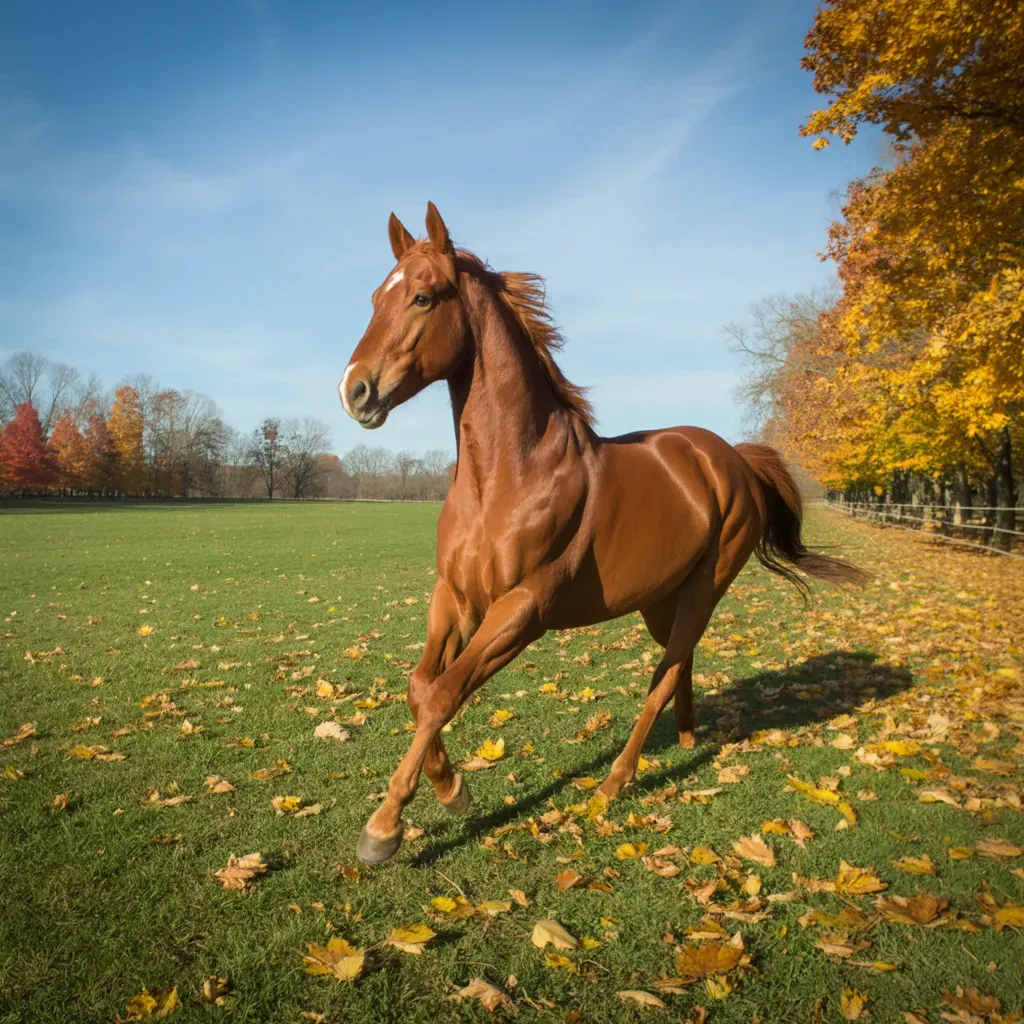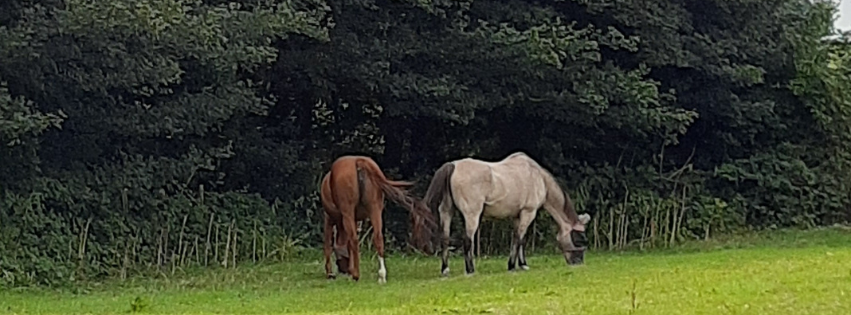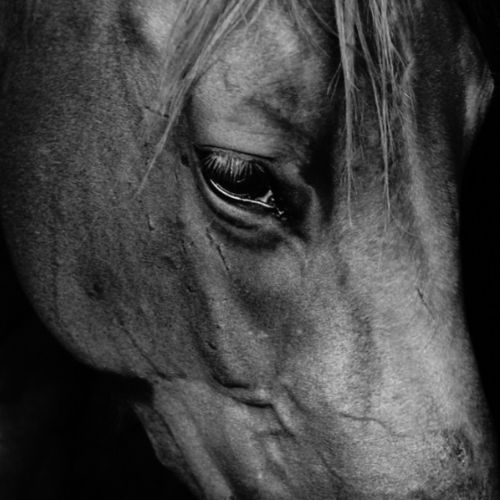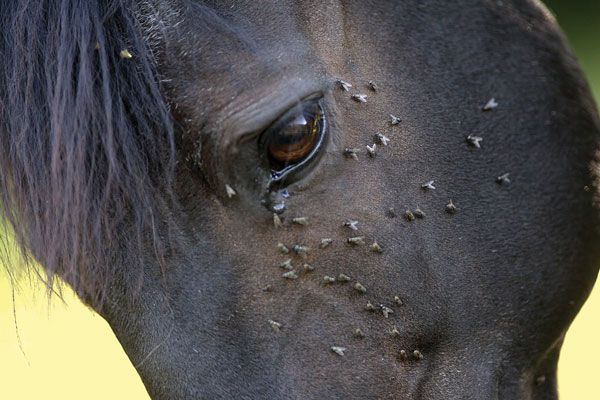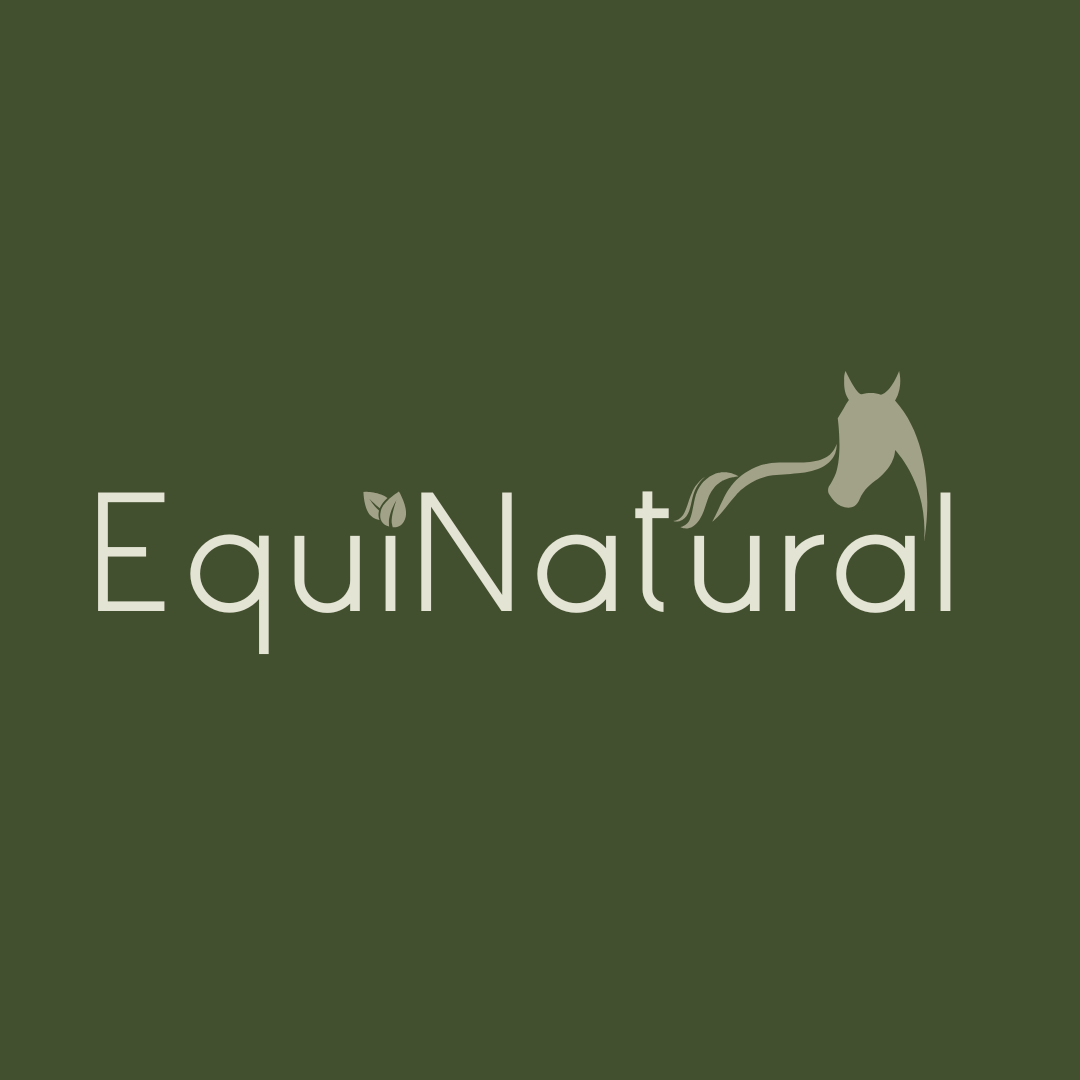Part 3: Fix the Cell to Get Well – the power of cellular nutrition
Why your horse’s true energy doesn’t come from a feed bag, but from within the cells themselves
You’re feeding well. You’ve ruled out ulcers. You’ve adjusted work. But your horse still seems flat.
Low energy isn’t always about obvious culprits like hormones or exercise load. Sometimes, the issues lies where we least expect: in the cells themselves.
This is where the real magic (or mayhem) begins – and it’s time we give those microscopic powerhouses the spotlight they deserve.
Welcome to Part 3 of our Thrive & Shine July Blog Series, where we shift gears from inflammation (Part 2) to cellular function – the engine room of your horse’s vitality, immunity, and performance. And when it comes to tired horses, sluggish systems, and the secret to vitality – it's time to talk mitochondria.
The energy crisis you can’t see
Does your horse seem flat, sluggish, or struggle with recovery – even with decent feed and turnout?
When we say “energy,” we often think of spark, stamina, or strength. But biologically, energy means something far more specific: the ability of your horse’s cells to function.
Every process in your horse’s body – healing, immune response, gut repair, muscle recovery – requires energy at the cellular level. And every cell in the body - be it a brain cell, muscle cell, or immune cell - needs a constant supply of energy to do its job. But if those cells aren’t fuelled properly, the whole system slows down.
We’re not just talking about calories. We’re talking about cellular energy metabolism – the kind of energy produced inside the tiny power stations of each cell - the mighty mitochondria. You need to get to know these tiny guys because these tiny powerhouses are the battery packs inside every cell – and when they’re drained, your horse feels it.
And if those batteries aren’t on full charge, the cells run down like a torch that goes out. So … we have to fix that cell to get well.
The mitochondria - where health happens
You’ve got trillions of cells in your body. Your horse has trillions more. And inside every one of them sit the mitochondria, amazing mini engines burning fuel from food and oxygen, converting nutrients into ATP – Adenosine triphosphate. I know – a weird name for the source of energy, or the body’s energy currency, for use and storage at the cellular level.
(Want the science? ATP stands for adenosine triphosphate – a molecule made up of a nitrogen base, a ribose sugar, and three phosphate groups. And no, we’re not testing you!)
But here’s the catch: if the mitochondria aren’t functioning properly – due to inflammation, toxins, poor nutrition, or stress – then energy production plummets, just like that torch going out.
Symptoms of poor mitochondrial function?
- Chronic fatigue
- Poor recovery after work
- Immune cells that can’t defend
- Muscles that can’t move
- The gut that can’t digest
- The brain which can’t focus
- Poor hoof and coat quality
- Miserable moodiness
And no surprise – it ties right back to the gut. Because the vital nutrients that fuel all these functions need to be digested properly, absorbed efficiently, and delivered to the cells in the first place.
In other words, when the mitochondria are underfed, overburdened, or inflamed, the entire system slows down.
Where does ATP come from? Why feed alone isn’t enough
ATP isn’t just “in the food.” It’s made from food, once nutrients are properly digested, metabolised, and transported into the cell.
But it’s not just any food - it’s micronutrients that power this process:
- Vitamins (B-complex, D, C, E)
- Minerals (magnesium, zinc, selenium, iron)
- Amino acids (proteins) for muscle repair and enzyme function
- Essential fatty acids for cell structure, brain function, and heart health
- Plant polyphenols (antioxidants) which protect the body by neutralizing harmful molecules (called free radicals), which damage cells and contribute to aging and disease
If these are missing, the cell can’t create energy - no matter how ‘complete’ the feed looks on paper. Even the best feed won’t help if:
- The gut can’t absorb nutrients efficiently
- The nutrients aren’t in bioavailable (asorbable) forms
- The detox systems are overwhelmed
- The cells are inflamed or oxidative-stressed
Which means - we need to feed the cells, not just the stomach.
And we can’t forget the vital role of the B vitamins – especially B6 and B12 – which play a crucial role in energy production by assisting enzymes in converting food into usable energy for the body. But here’s where it often goes wrong.
Buy them off the shelf and you’ll likely get synthetic, yet no matter how hard it tries, the equine liver will struggle to convert these into the required ‘activated’ forms that the body can actually use.
So what does the equine body do?
It manufactures it’s own B6 and B12 in the required activated forms – B6 as P5P and B12 as methylcobalamin. How? All created by those fibre fermenting bacteria from a healthy hindgut microbiome, which means … a hindgut microbiome in a state of dysbiosis won’t be producing these vital byproducts.
Collectively, these are the building blocks of vitality. Without them, the body can’t rebuild, protect, or perform.
The gut–cell connection
Here’s the kicker: mitochondria are regulated by the gut. They depend on:
- Microbial metabolites (like butyrate from that fibre fermentation)
- An intact gut wall for nutrient absorption
- Minimal inflammation to prevent cellular damage
It’s easy to get fixated on protein, fat, or sugar levels. But it’s the micronutrients - those tiny, potent compounds - that do the real heavy lifting. They:
- Switch on metabolic pathways
- Power up mitochondria
- Support antioxidant defences
- Regulate cellular hydration
Without them, the cell slows, stutters, and shuts down.
This is why we always say: Fix the gut, and the rest follows. Because without a healthy digestive system, those ATP-producing nutrients simply won’t arrive where they’re needed.
From feed bag to cell wall – the journey of nutrients
Let’s trace the path:
- Digestion: Starts in the foregut and continues in the hindgut with microbial fermentation
- Absorption: Nutrients are taken through the gut wall into the bloodstream
- Delivery: Nutrients are transported via blood to the cells
- Utilisation: Cells use nutrients to create ATP and support biochemical processes
Any blockage along the way – poor digestion, leaky gut, sluggish detox function to get the bad stuff out – means your horse is running on empty.
How nutrition builds immunity
Did you know?
- Zinc is vital for gut wall integrity and immune signalling
- Magnesium is essential for over 300 cellular processes, including stress regulation
- Selenium and Vitamin E protect cell membranes from oxidative damage
- Metabolically active – not synthetic - B vitamins are needed to convert food into usable energy
- Omega-3s reduce inflammation and help with cell membrane fluidity
When your horse’s cells are fed well, they can:
- Repair faster
- Detox more efficiently
- Respond better to immune threats
- Regulate inflammation
- Support calm behaviour and better stamina
Signs your horse might be experiencing cellular fatigue
- Low energy despite decent feed
- Poor recovery after exertion
- Inconsistent behaviour or focus
- Skin or hoof issues despite supplements
- Loss of top-line or poor muscling
These are all clues that something is breaking down before the symptoms show up on the surface.
The EquiNatural approach – Energise with C.A.R.E. - cellular nutrition in action
Meet the 'R' of C.A.R.E.
In our C.A.R.E. Supplement Protocol, this is where the R and E come into play. The R stands for Regenerate, focusing on:
- Stabilising and regenerating the gut lining
- Rebuilding the microbial terrain
- Replenishing the cell’s nutrient stores
This is where the mitochondria come back to life. And it’s why we’re so passionate about herbs, inorganic minerals – I know – when it comes to minerals, inorganic vs. organic is the other way round (it's a chemistry thing), and bioavailable wholefood nutrients which provide the raw material cells actually recognise and use.
Now to the E = Energise …
We don’t just want your horse to cope. We want them to thrive – with fuel that works at the cellular level.
This includes:
- Herbal adaptogens like Rhodiola, Schisandra, Astragalus – to support adrenal balance and oxygen uptake
- Medicinal mushrooms like Reishi and Cordyceps – for immune and mitochondrial support
- Now to those inorganic mineral sources – absorption matters. When it comes to minerals, nature’s got the naming back to front. ‘Inorganic’ minerals are the natural, stable forms that horses evolved to digest. By contrast, lab-made ‘organic’ chelates can confuse absorption pathways, sneaking a mineral in via a synthetic Trojan horse – even when the body doesn’t need it – which risks oversupplementation and, in some cases, toxicity.
- Antioxidants, and amino acids as building blocks
What does this mean for your horse?
If your horse:
- Struggles with stamina or recovery
- Feels flat despite a good diet
- Has recurring immune or inflammatory issues
- Seems stressed or anxious with no clear trigger
… it’s time to think cellular. Let’s not just feed for condition - let’s feed for function.
Final thoughts - the Big Picture: from cell to system
Cells form tissues. Tissues form organs. Organs form systems. Systems form your horse.
So when one cell struggles, the ripple is real. But here’s the good news: so is the recovery.
- Flood the cells with real, bioavailable nutrition to fuel mitochondrial repair and energy.
- Feed the gut bugs who deliver the message.
- Watch your horse come back to life – steadily, sustainably, from the inside out.
Coming next: The Microbiome – Your Horse’s Inner Ecosystem - Weed It, Feed It, Seed It
Now that we understand how vital the cells are, it’s time to meet their primary regulators. In Part 4 we’ll explore the living world inside your horse – the gut microbiome which runs the show, where these trillions of microbes play a central role in digestion, inflammation, immunity, and even behaviour. And why fibre, not feedbags, is the real gamechanger.
See you there!🌿

